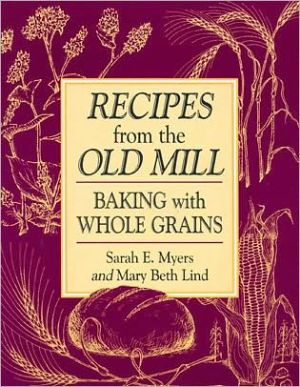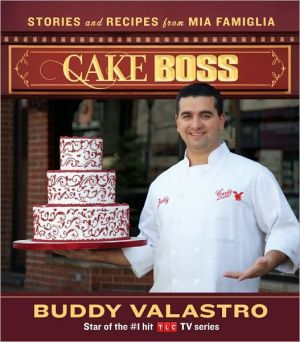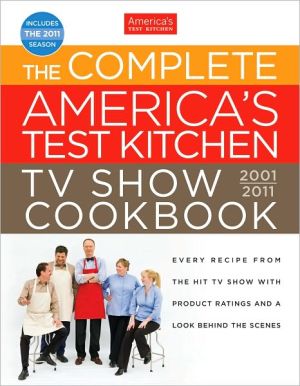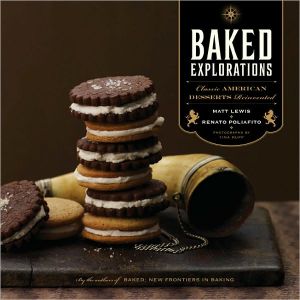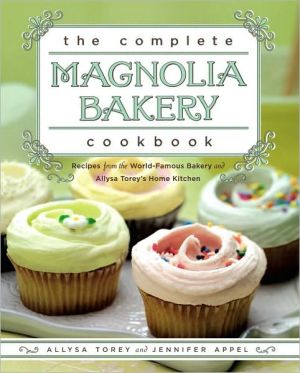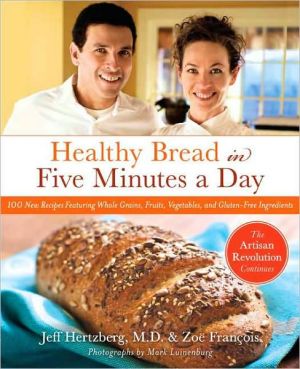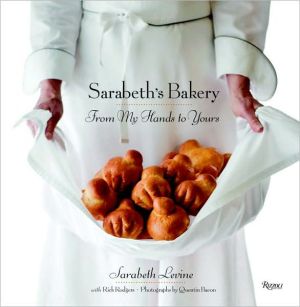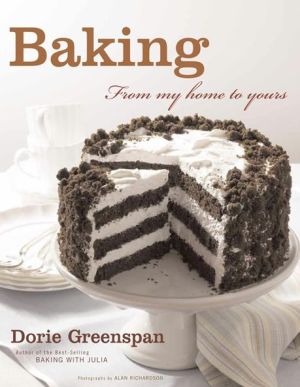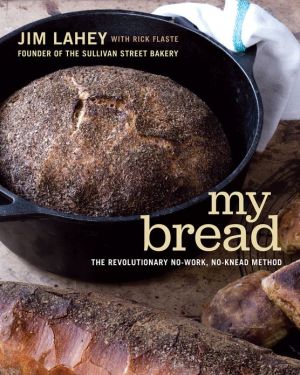Recipes from the Old Mill
Simple grains yield rich breads that range from the mystically light to the substantially chewy. These breads offer incontestable food value and flavor; they will satisfy and delight those sensitive to nutritional concerns.\ \ "This collection of 170-plus healthful recipes using a variety of whole grains is also a meditation on the staff of life, both organic and spiritual." -- Publishers Weekly\ \ \ Simple grains yield rich breads that range from the mystically light...
Search in google:
From the Backcover Simple grains yield rich breads that range from the mystically light to the substantially chewy. These breads offer incontestable food value and flavor; they will satisfy and delight those sensitive to nutritional concerns. The very act of bread baking itself provides a welcome diversion from the computer screen or office -- and a gratifying result, no matter one's other occupations! Two sisters, whose family has operated a mill for two generations producing stone-ground flours, bring these recipes from the family and neighbors in West Virginia. Here are more than 180 recipes for a multitude of breads, sweet rolls, international grain dishes, and desserts. Each recipe is explained in thorough detail for a novice as well as an experienced baker. So it is no surprise that we both graduated from college with majors in Home Economics. Sarah continued with degrees in Early Childhood Education and in Occupational Therapy. Mary Beth received a master's in Foods and Nutrition and became a registered dietitian. This cookbook, however, does not grow out of our formal education; instead it rises out of our experience and our love of whole grains. Currently, Sarah lives in Mount Joy, Pennsylvania, with her husband Herb and the youngest of their three daughters. Sarah is an occupational therapist at Wernersville State Hospital where she started a "Dough-it-yourself" bread-baking therapy group. Mary Beth is a consultant dietitian in private practice. She lives near the homeplace in West Virginia with her husband, Lester, who is the miller at The Old Mill. Together they also direct Mountain Retreat, a small Christian retreat center with a theme of "discovering the connection between the spiritual and the organic sources of life." Publishers Weekly The authors are sisters who grew up near their family's stream-powered grist mill in West Virginia. Their collection of 170-plus healthful recipes using a variety of whole grains is also a meditation on the staff of life, both organic and spiritual. Five chapters on kinds of grain (Corn, Wheat, Rye, Buckwheat and Multi-Grain) offer selections of grain-specific recipes (e.g., Corn Chips and Roberta's Sourdough Rye loaves). Five more chapters expand on categories like Main Dishes and Desserts. Straightforward tips included at the end of recipes (e.g., ways to shape rolls and buns) are reassuringly helpful and are listed in the table of contents for easy reference. The range of recipes, especially for those using whole wheat flour, is extensive: 100% Whole Wheat French Bread, Whole Wheat Brownie Pie, Whole Wheat Tortillas. Recipes for using doughnut holes to make muffins or for throwing stale bread and aging cheese into a bread souffle articulate the authors' principles of good stewardship of the earth's resources. Pen-and-ink drawings add to the charm of this book, which will appeal to novice and veteran bakers. The authors make no mention of bread machines. (Oct.)
Introduction\ \ In 1954, when our father, a country doctor, bought land on which he wished to build his medical clinic, an old building sat at one end of the acreage, and a stream flowed through the property. This old building and this stream were a water-powered grist mill and a mill stream.\ \ We spent many happy hours boating on the mill pond in summer and ice skating on the mill pond in the winter. Inside the old building, the smells of wood, water, and flour blended into an incense which seemed timeless. It was a wonderful place to sit -- feeling the throb of the mill stones rhythmically turning, hearing the water rushing into the turbine, and seeing the grain entering the hopper only to reappear as flour. Somehow, that hard, dry, whole grain was turned into a fine, soft flour.\ \ When our uncle, the miller, wasn't looking, we would slide our hands quickly under the spout and grab a handful of flour, quietly stuffing it into our mouths. Then sputtering as we choked on the dry flour, we were chased away, temporarily. I say temporarily, because there was something about that timeless smell of wood, water, and flour that drew us back.\ \ And so, years later, we are drawn back to this old mill. As adults we no longer steal fresh ground flour from the spout and savor it in our mouths; instead we grind the grains and bake fresh breads which we savor and share.\ \ This heritage and joy of fresh whole grains and baking is what we would like to share with you.\ \ -- Sarah E. Myers and Mary Beth Lind\ \ Chapter 1 -- CORN\ \ Corn originated in the Americas. In fact, most early American civilizations were based on it. The Aztec and Mayan cultures of Central and South America, as well as the Appalachian Seneca Indian culture in West Virginia, were all corn cultures. While our present day diet is not based on any one grain, the grain most often raised in this part of Appalachia is corn. At our mill most of what we custom-grind is corn.\ \ Not all corn is alike. There is flint or dent corn, open pollinated or hybrid, yellow or white, field corn or sweet corn. When grinding corn for cornmeal, we most often use a yellow, field, dent, hybrid corn. Yellow is most common and best liked locally. However, if you live further south, you probably prefer white corn. The difference between the two is mostly skin-deep. Yellow corn does contain more Vitamin A than white corn.\ \ The corn most commonly ground is field corn. It is usually dried well, which enhances its grinding and keeping quality. (If you have trouble with your cornmeal molding, either the corn was not dried properly before it was ground, or you are storing it improperly.)\ \ Most often, field corn is a dent corn. The name comes from the dent that forms at the top of the kernel when the corn is dried. Each kernel is composed of both hard and soft starches. When ground, these starches yield the characteristic cornmeal texture.\ \ Flint corn, the alternate of dent corn, is better known as Indian corn. Its kernels contain soft starch in the center with a coating of flint-hard starch all around it. When flint corn is ground, it makes a corn flour because of the flint-hard starch surrounding the kernel. Corn flour or cornmeal, unlike wheat flour, contains no gluten and so cannot be used alone when you bake with yeast.\ \ At our mill, when a farmer brings corn to be ground, we accept toll or cash payment. Toll is 1/10 of the grain or flour as payment for the grinding. If I happen to be around when my husband is doing the grinding, and I realize that the corn being ground is a traditional corn such as Bloody Butcher, I whisper to my husband, "Ask the farmer if we can take toll instead of cash." This way I get some good cornmeal!\ \ Whatever corn we used to grind your cornmeal, you may choose whether to buy it sifted (bolted) or not. This is mostly a matter of personal preference. Sifting, which takes out some of the bran, gives a more even textured meal, but one with less fiber. You may want to choose based upon how you plan to use the cornmeal. I prefer a sifted meal for spoon bread but an unsifted meal for cornbread.\ \ When I think of cornmeal, I immediately think of bread. However, which bread? Cornbread, the family favorite, or Yogurt Cornbread, my personal favorite? Then, too, there are the variations such as Spoon Bread, which is delicious with a pot of baked beans, or the whole range of muffins, from Cornmeal to Sweet Tofu Corn-Oat. In this section you will find Buttermilk Cornmeal Biscuits. And for an adventuresomely different, but very traditional, bread, try Salt-Rising Bread.\ \ Breads are not the only things to make with cornmeal. Start the day with Crunchy Cornmeal or Tender Cornmeal Pancakes or a bowl of Cornmeal Mush. For a snack try Corn Chips, and for a showy dinner roll try Corn Bubble Ring.
Table of Contents Introduction Corn Wheat Rye Buckwheat Multi-Grain Spreads Breakfast and Holiday Breads Cultural Foods Main Dishes Desserts Know Your Ingredients Index About the Authors
\ Publishers Weekly - Publisher's Weekly\ The authors are sisters who grew up near their family's stream-powered grist mill in West Virginia. Their collection of 170-plus healthful recipes using a variety of whole grains is also a meditation on the staff of life, both organic and spiritual. Five chapters on kinds of grain (Corn, Wheat, Rye, Buckwheat and Multi-Grain) offer selections of grain-specific recipes (e.g., Corn Chips and Roberta's Sourdough Rye loaves). Five more chapters expand on categories like Main Dishes and Desserts. Straightforward tips included at the end of recipes (e.g., ways to shape rolls and buns) are reassuringly helpful and are listed in the table of contents for easy reference. The range of recipes, especially for those using whole wheat flour, is extensive: 100% Whole Wheat French Bread, Whole Wheat Brownie Pie, Whole Wheat Tortillas. Recipes for using doughnut holes to make muffins or for throwing stale bread and aging cheese into a bread souffle articulate the authors' principles of good stewardship of the earth's resources. Pen-and-ink drawings add to the charm of this book, which will appeal to novice and veteran bakers. The authors make no mention of bread machines. (Oct.)\ \ \ \ \ Library JournalThe authors are sisters who grew up near an old grain mill, and Lind's husband is the miller there today. Both sisters have a background in home economics (Lind is a registered dietitian), and these are the recipes they have developed over the years. There are corn, wheat, rye, buckwheat, and multigrain breads, as well as some main dishes and desserts based on grains. Many old-fashioned breads are included, and the book has a nice, homey feel. A number of excellent books by artisan bakers have appeared in recent years, including Joe Ortiz's The Village Baker (LJ 12/92); with its sense of home and family, Recipes from the Old Mill has its own appeal.\ \
